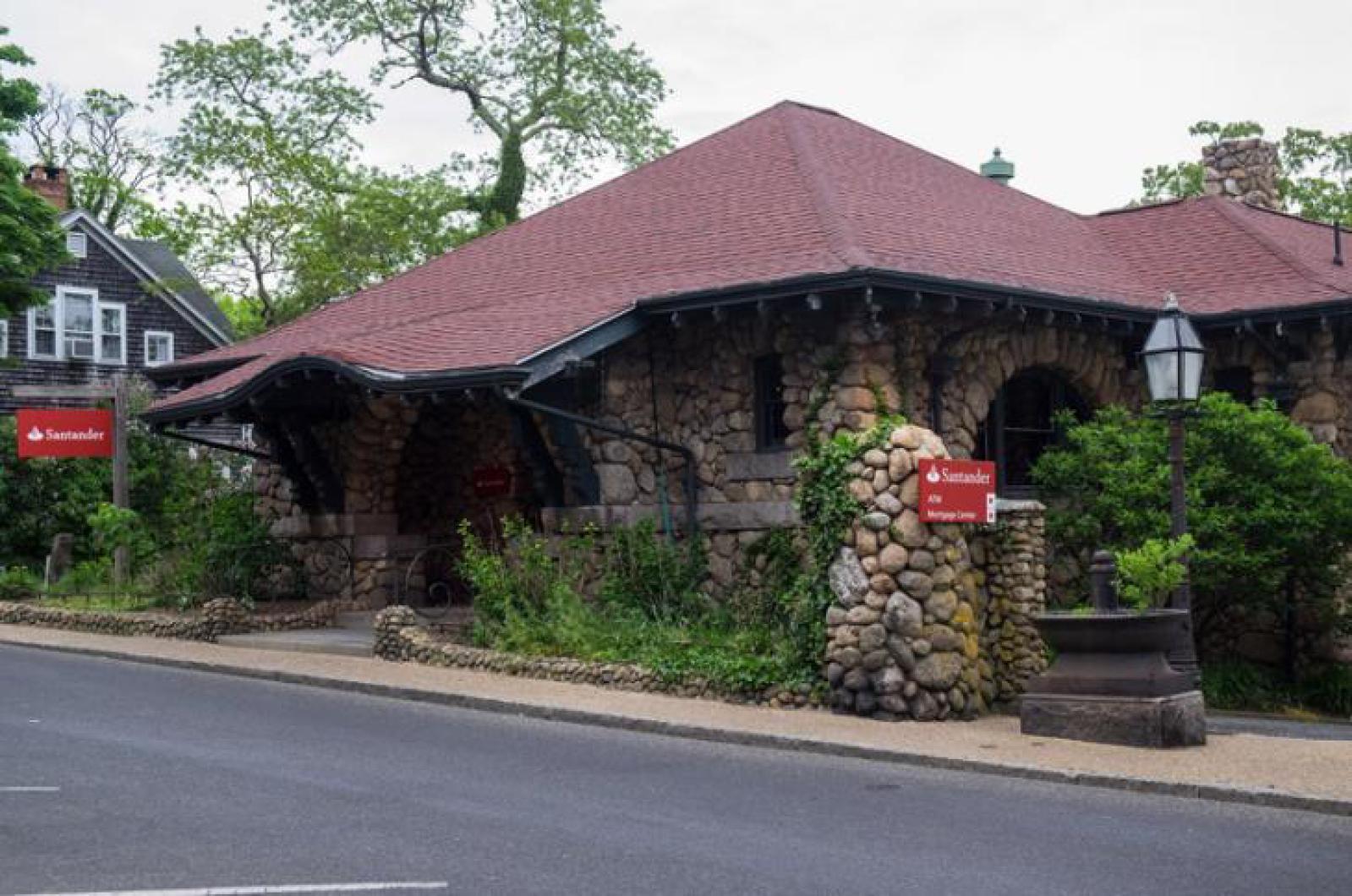The iconic Stone Bank in Vineyard Haven may soon have its grooves back.
The Martha’s Vineyard Commission on Thursday voted to require Santander Bank to restore the early 20th-century building on Main street to its appearance prior to last fall, when a historic terra-cotta roof was replaced with red asphalt shingles.
The 13-1 vote followed a months-long public hearing process during which the bank, based in Santander, Spain, made no formal offers to the commission.
“We gave the applicant ample opportunity to come up with a solution,” commissioner Leonard Jason Jr. said Thursday night.
The project was reviewed as a development of regional impact after the fact, since the project was already completed by the time it was referred to the commission last fall.
The bank now has two months to come up with a plan and six months to carry it out. The plan itself will be subject to commission approval.
Commissioners debated whether to require a specific type of clay tile to replace the asphalt, but the usual discussion of benefits and detriments was somewhat abbreviated.
“To sum up the benefits and detriments, if the building is restored [with] its original clay-tile roof, that would be a benefit,” commission chairman Jim Vercruysse said Thursday. “And it would be a detriment to leave it the way it is.”
The town building inspector last fall mistakenly signed off on the project without referring it to the MVC for review. The Tisbury selectmen later allowed roof work to continue in light of an approaching hurricane. But the town historic commission has said that the bank itself should have had more foresight, given the building’s historic nature.
A commission staff report found that the bank had obtained an estimate from CP Rankin of Chalfont, Pa., last fall to install Ludowici Spanish barrel tiles at a cost of $276,260. As an alternative Roman pan tiles would have cost $388,950. In the end, the bank opted for red asphalt shingles for about $101,000.
According to the staff report, Ludowici clay barrel tiles come with a 75-year warranty, compared to a 25-year warranty for the asphalt shingles. The report also cites a National Park Service document that says clay tiles require little or no maintenance and if installed properly can last several hundred years.
In the roll call vote, commissioner James Joyce was the lone dissenter. Voting in favor were Gail Barmakian, Clarence A. (Trip) Barnes 3rd, Christina Brown, Rob Doyle, Fred Hancock, Leonard Jason Jr., Joan Malkin, Kathy Newman, Ben Robinson, Linda Sibley, Ernie Thomas and Jim Vercruysse.
In other business, the commission approved the demolition of a 19th-century house on Franklin street in Vineyard Haven that has been a topic of intense scrutiny since a public hearing opened in March. Owners William Westman and Cees van Eijk plan to build a replica where the house now stands, including a two story addition to the side.
In response to concerns by the MVC, the town historic commission and others, Mr. Westman has twice revised his plans to make the proposed replica more true to the Greek Revival period. The commission land use planning committee in May recommended approval of a plan that eliminates French sliding doors and shortens windows on the second floor, among other changes.
Debate continued on Thursday over whether to require the owners to use wood trim in place of polyvinyl chloride (PVC) trim.
“If we are going to recreate a historic building, at the very least it shouldn’t impact our environment in a detrimental way,” said commissioner Ben Robinson, noting that PVC contains dioxins that end up in the atmosphere when the materials are thrown away and incinerated — or otherwise leach into the ground.
Some said it was too late in the process for new conditions.
“It’s not fair to this applicant to all of a sudden throw this curve ball at him, when he’s tried very hard and bent over backwards to do a decent project,” said commissioner Fred Hancock. He said PVC would require less maintenance.
But others joined in advocating for wood trim.
“All we’re asking is that if he wants to restore it, restore it the way it was built: with wood,” said Mr. Jason. “It lasted 200 years; that’s longer than any of us are going to last.”
A motion to require wood trim passed by a show of hands, and the commission voted 7-2, with one abstention, to approve the demolition. As one of the conditions, the project must incorporate the recommendations of the town historic commission, which otherwise would not have jurisdiction. Ms. Barmakian, Mr. Barnes, Mr. Doyle, Mr. Hancock, Mrs. Malkin, Mr. Thomas and Mr. Toole all voted in favor. Mr. Jason and Mr. Robinson opposed. Mrs. Brown abstained.
The commission’s next meeting is June 15.







Comments (14)
Comments
Comment policy »